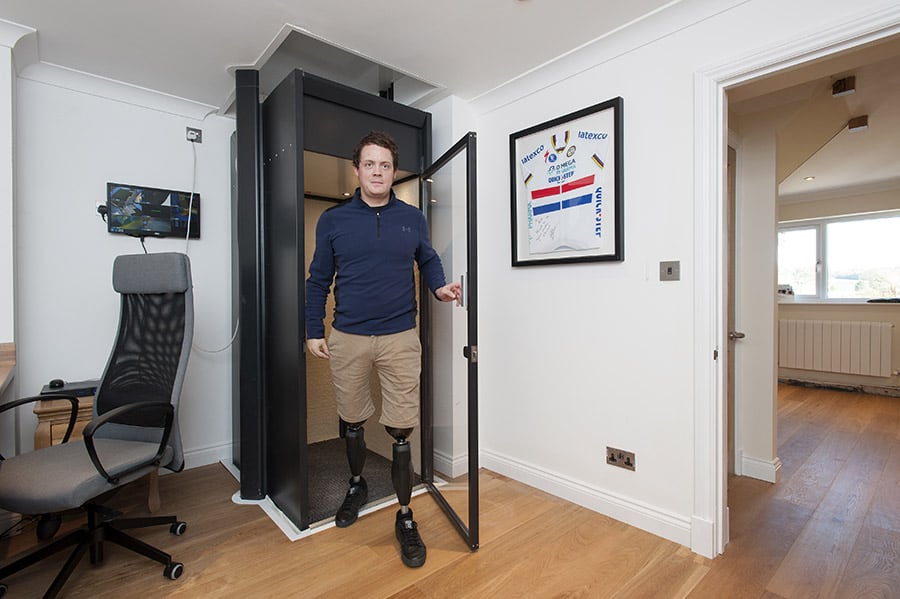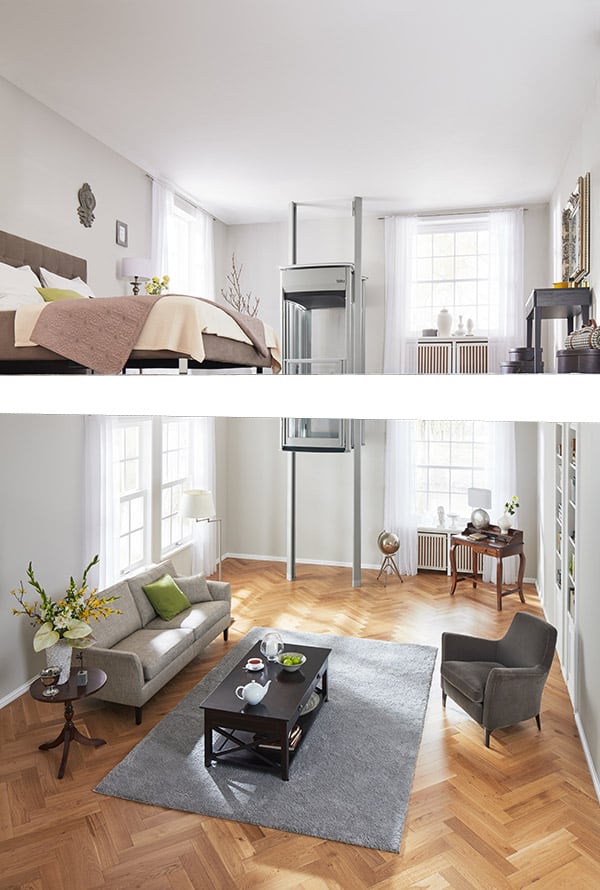The OT’s Perspective: Should your customers consider a homelift?
As the popularity of home lifts increases rapidly, Stuart Barrow looks at what retailers need to think about when their customers are considering them…
In the past, stairlifts were the order of the day, and five years ago, a housing association was unlikely to consider home lifts as genuine stairlift alternatives.
Times have changed.
Over the last few years, home lifts have become increasingly popular, with many of the housing associations we work with now having contracts in place with home lift suppliers.
In a previous article, I’ve covered the pros and cons of both stairlifts and home lifts, so if you’re not sure whether they’re right for your clients, I’d strongly suggest checking that article out.
How to demonstrate home lifts
When you’ve decided that a home lift is the right fit for your customer, you now need to show them the lift and ensure they’re happy with it.
This is easier said than done, especially if your client can’t easily get around.
A recent client that I specified a home lift for was a young child which meant travelling to locate one just wasn’t an option.
As a result, I used a combination of YouTube videos and a few company visits and we arrived at a Stiltz home lift.
If you deal in home lifts, it may well be worth considering featuring a home lift in your showroom. Yes, it will incur expense but in the long run, it’s likely to be a good investment as the current trend of home lifts shows no sign of abating.
How to fund home lifts
In the particular case I mentioned above, the housing association were funding a lift for their tenant.
If this isn’t the situation, a Disabled Facilities Grant (DFG) is a possibility and if a child is looking to apply for one, it isn’t means-tested.
In addition, several charities will contribute towards a home lift and some clients will refinance or take out a loan to find a lift – it’s important to be aware of these options when talking to clients.
Why choose a home lift over a stairlift?
I specified the home lift for my recent client, because:
- He was under 5 and has a condition which means he cannot self-transfer
- Space was limited within the property
- He will need a wheelchair and will need the freedom to move around the property
Practical benefits of a home lift
- If your customer is finding using stairs difficult and they are at risk of injury caused by a slip, trip or falls, then a home lift helps solve this problem. In your show room, it’s important to observe your customers. Does your customer look unsteady?
- A home lift will give your customers the freedom to move around their property with ease, enabling them to remain at home as opposed to moving and living on the ground floor of a house or relocating to a flat or bungalow and incurring further costs
- A home lift is more cost-effective than building a bedroom/wet room on the ground floor of an existing property
- Home lifts are a safe, reliable solution for wheelchair users if transferring independently is difficult or simply not possible. Recently a reported accident in THIIS Magazine explained how a vulnerable service user fell down the stairs and died transferring at the top of the stairs onto an older style stair lift
- They’re also a practical addition to the home as they allow you to move heavy items between floors. This is helpful for some customers living on their own and not having to carry washing up and down the stairs, especially on their laps if using a stair lift
Could your client use the DFG to get a home lift?
A Disabled Facilities Grant (DFG) exists to pay for essential housing adaptations to help people stay in their home and live an independent life and a DFG assessment decides whether the work is needed and whether it is reasonable and feasible.
As a result, set categories of provision are considered by the assessor, often an occupational therapist or potentially a trusted assessor.
In relation to the home lift recommendations, this may fall under the categories:
- Access to a bath and or shower (thus bathroom access)
- Access to a bedroom
- In upside-down houses, this could be access to a principle family room, kitchen and rear access to the property
If you feel you would like to no more about the DFG and how it applies to your clients, we are holding a one-day training course at our offices in South Wales on November 11th 2020, covering:
- How the DFG affects benefits
- Understanding of the “means test”
- How to assess eligibility
- How to apply
- Appeals
- What the DFG covers
- Understanding basic plans
- Understand case studies and link legislation to practice.
For more information and to book onto the course, give us a call on 02921 900402 or email us at info@promoting-independence.co.uk
Stuart Barrow of Promoting Independence is a member of the British Association of Occupational Therapists panel and a recognised contributor in the field of home adaptations. His experience is sought by manufacturers and service providers looking for an expert opinion. He also runs the Occupational Therapy Adaptations Conference
Check out more OT’s Perspectives here for expert advice and insights





